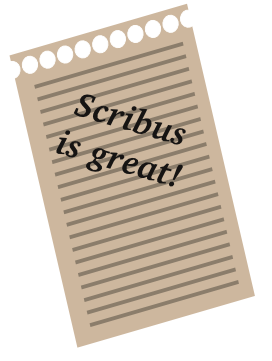Creating borders: Difference between revisions
Jump to navigation
Jump to search
C schaefer (talk | contribs) (New page: {{TIP Index}} For certificates, images or similiar things sometimes complex borders are needed. This is a very simple trick that simply uses the duplicating functions for some shapes and ...) |
No edit summary |
||
| Line 7: | Line 7: | ||
* We start with the creation a polygon or a shape which will be the basis for the border. In this case, it's a polygon with four corners. | * We start with the creation a polygon or a shape which will be the basis for the border. In this case, it's a polygon with four corners. | ||
[[Image: | [[Image:Borders2b.png]] | ||
* Use ''Item > Multiple Duplicate'' and create 10 – or any other number of – duplicates with a horizontal shift that is slightly smaller than the width of the original shape. Vertical shift is 0. | * Use ''Item > Multiple Duplicate'' and create 10 – or any other number of – duplicates with a horizontal shift that is slightly smaller than the width of the original shape. Vertical shift is 0. | ||
Revision as of 00:12, 13 August 2007
| Installation • Usage • PDF issues • Other |
For certificates, images or similiar things sometimes complex borders are needed. This is a very simple trick that simply uses the duplicating functions for some shapes and – at your option – the combining of shapes. The results can be used in a lot of ways.
- We start with the creation a polygon or a shape which will be the basis for the border. In this case, it's a polygon with four corners.
- Use Item > Multiple Duplicate and create 10 – or any other number of – duplicates with a horizontal shift that is slightly smaller than the width of the original shape. Vertical shift is 0.
- At your option, use Item > Combine Polygons.
- Duplicate the resulting object, rotate it and build a border for an image.
- With some white circles, combined with a paper-coloured rectangular, you can build a memo.
- By the way, this seems to be the only way to build a dotted line from circles in Scribus :-)
(c) Thomas Zastrow, 2007 The content of this page is licenced under the Free Documentation Licence.





